GE2025: With a large number of multi-cornered fights on the cards, will this play into PAP's hands?
Early claims staked by opposition parties could result in multi-cornered fights in up to 15 constituencies. This number is expected to decline come Nomination Day, but several may be unavoidable due to coordination and strategic conflicts, analysts and party insiders say.
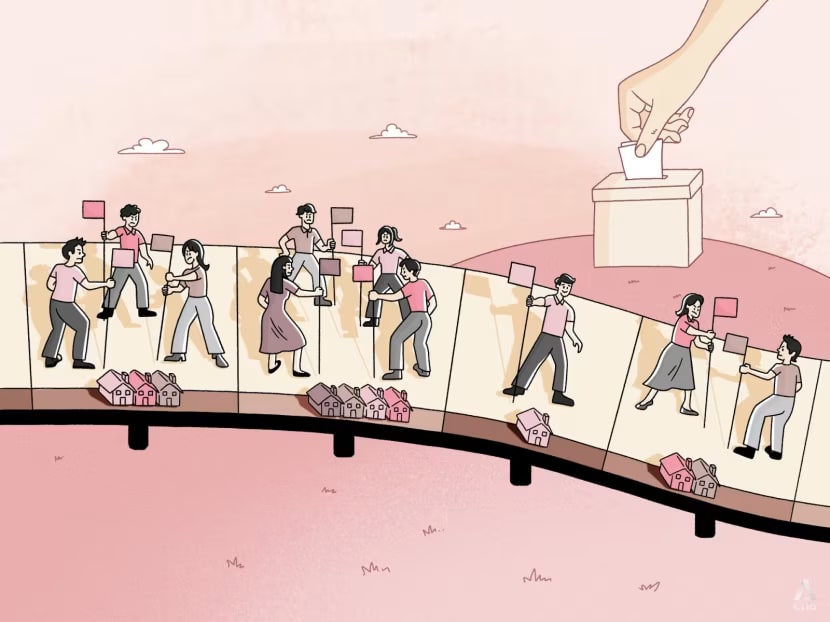

This audio is generated by an AI tool.
rom the moment that Singapore's redrawn electoral boundaries were revealed on March 11, opposition political parties moved quickly to draw up their game plans.
Barely a month on, flag poles have been (metaphorically) planted across the land. In some districts, various opposition parties are still wrangling over who should contest.
A total of 97 seats in 33 constituencies are up for grabs at the upcoming General Election (GE).
Based on media reports on party movements and statements of intent made by parties themselves, as of April 11, as many as 13 of these – eight Group Representation Constituencies (GRCs) and five Single Member Constituencies (SMCs) – could see a three-cornered fight in the upcoming election.
Two more, Jalan Kayu SMC and Tampines GRC, might even see a four-party face-off.
If such a scenario – excluding independent candidates – fully comes to pass, GE2025 will be one of Singapore's most keenly contested polls ever.
However, things could look different by Nomination Day, because political analysts believe that some of the opposition parties staking claims to these popular sites will likely back down.
Looking at historical data, Dr Elvin Ong from the department of political science at the National University of Singapore (NUS) said that 95 per cent of all potential multi-cornered contests resolve into head-to-head races before Nomination Day.
Indeed, in just the last few weeks, some opposition parties have already publicly backed out of certain areas that they had initially said they would contest, while bilateral talks between parties are reportedly ongoing.
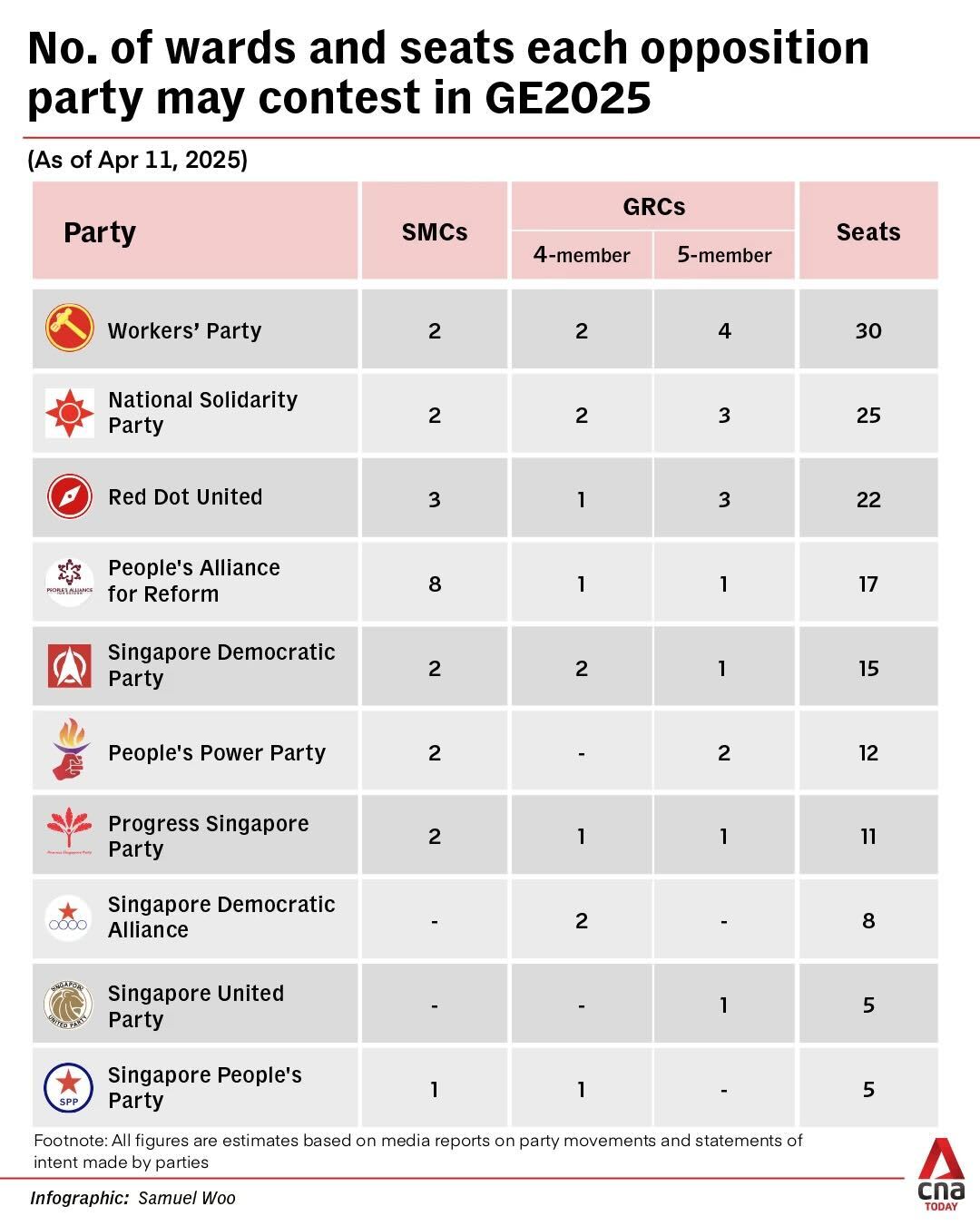
There were political observers, including associate professor and former nominated member of parliament Eugene Tan, who noted that there is a higher-than-usual number of constituencies with multiple claims this time round, as compared with the lead-up to past elections.
Mr Jose Raymond, former chair of Singapore People’s Party (SPP), likewise noted that in 2020 when he contested in Potong Pasir SMC, there were not this many potential multi-cornered fights even before Nomination Day.
In the past seven elections since 1991, there have been only 14 multi-cornered fights altogether.
The previous one in 2020 saw a GRC being contested by more than two parties for the first time, when Pasir Ris-Punggol was fought over by the People's Action Party (PAP), Singapore Democratic Alliance (SDA) and Peoples Voice.
The only other multi-cornered GRC contest in Singapore's political history took place almost three decades before, in a 1992 by-election for Marine Parade.
Teams from the Singapore Democratic Party (SDP), National Solidarity Party (NSP) and the Singapore Justice Party were defeated resoundingly by the PAP slate led by then-Prime Minister Goh Chok Tong.
Multi-way fights in SMCs are more common.
In 2020, Pioneer SMC was fought over by Mr Patrick Tay from PAP, Mr Lim Cher Hong from Progress Singapore Party (PSP) and independent candidate Cheang Peng Wah.
In GE2015, three SMCs had multi-cornered fights, two of them involving independent candidates.
And in GE2011, there was a three-horse race in one SMC.
Previous
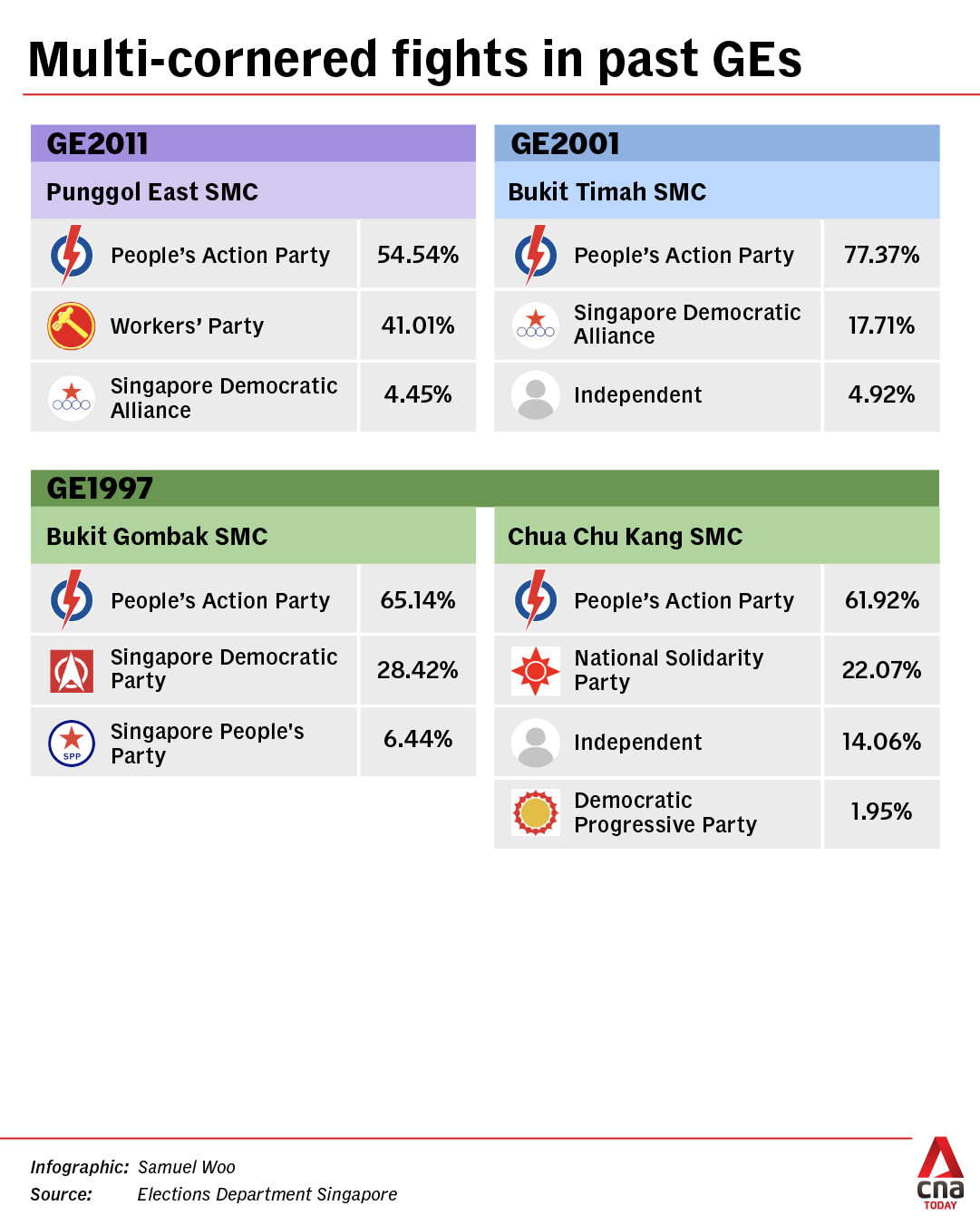
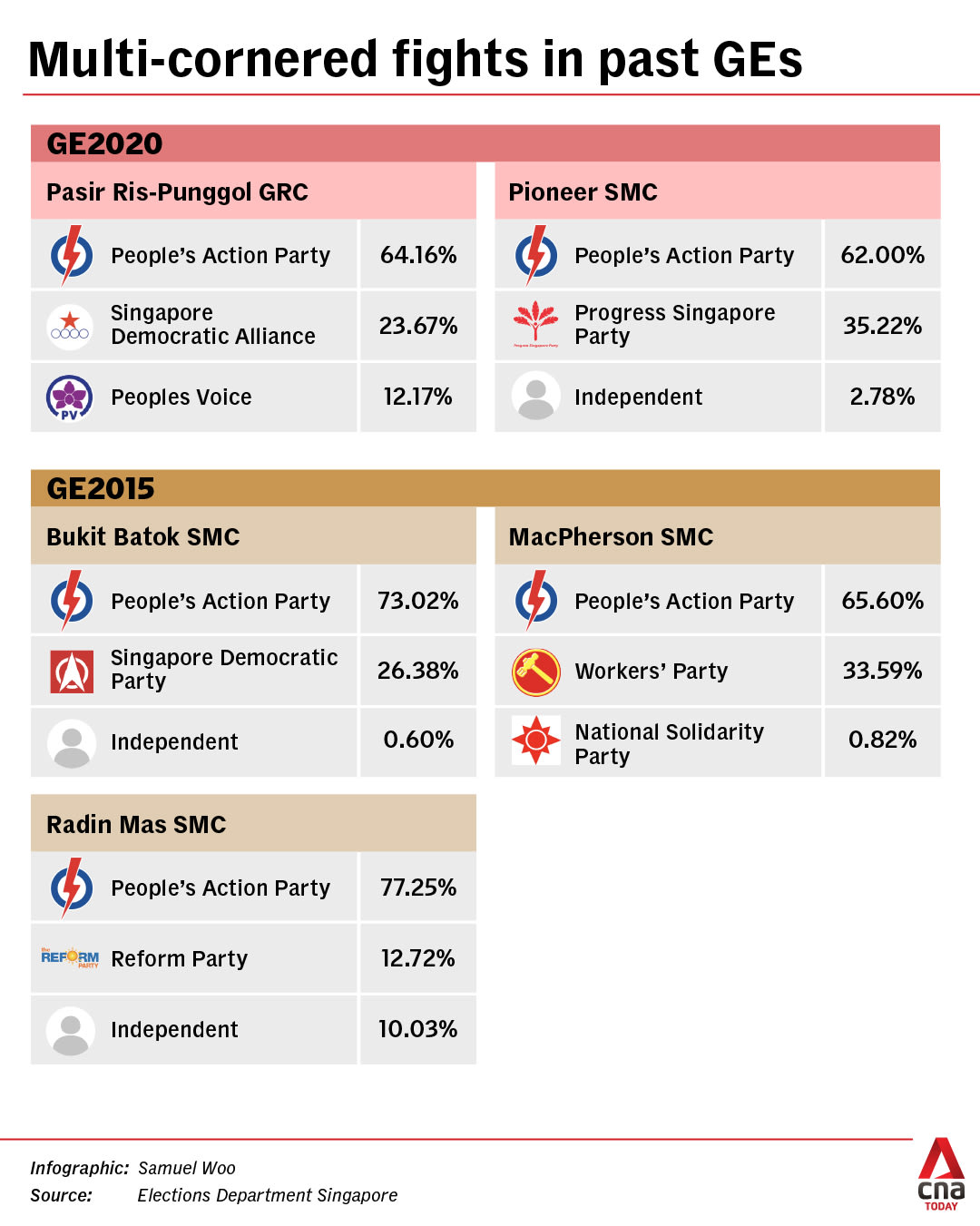
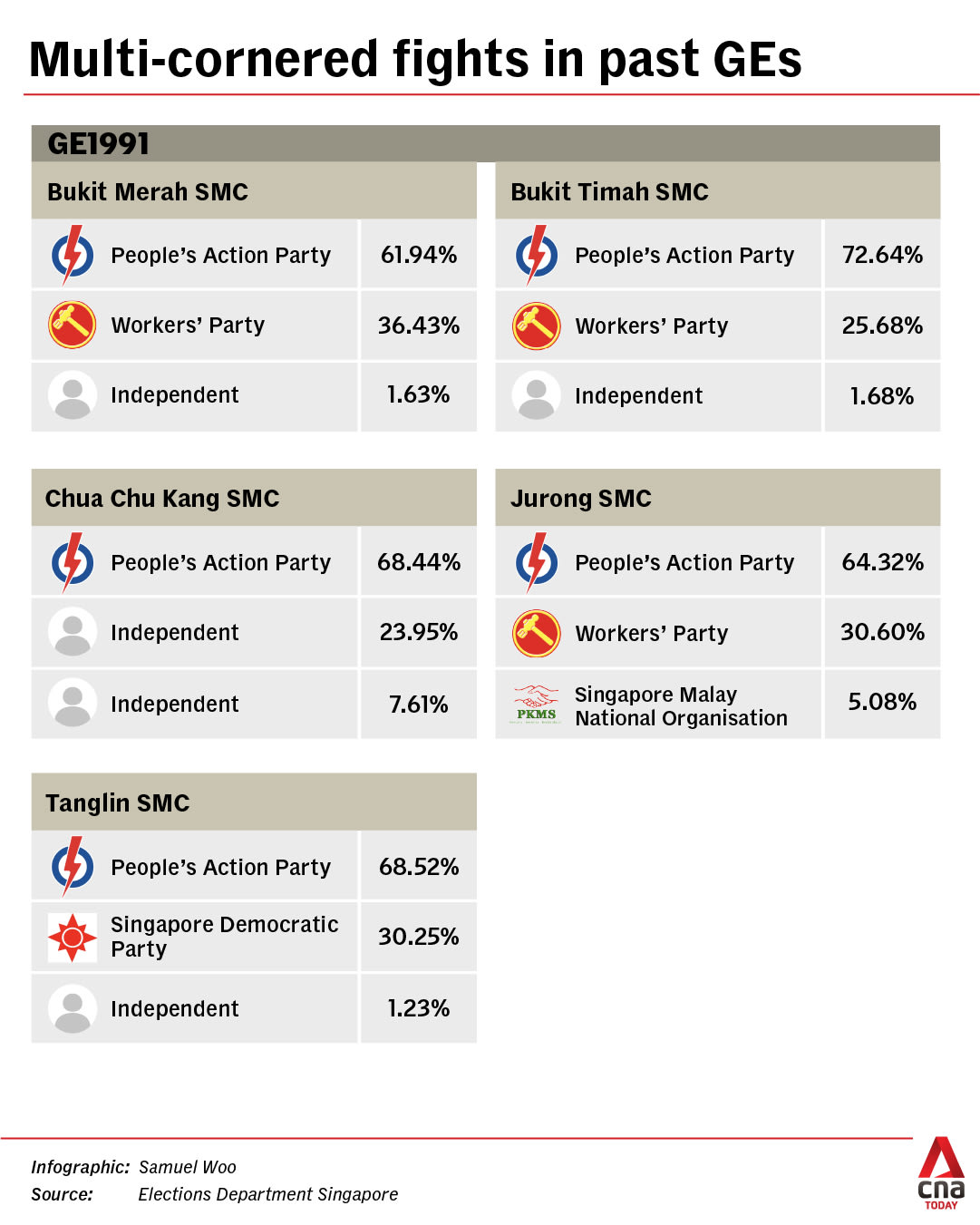




Next
- 1
- 2
- 3
Analysts said that in such fights, the ruling party tends to benefit because the opposition vote would be diluted.
It is for this reason that opposition parties traditionally come together for “horse-trading talks” to decide which parties would compete in which constituencies and avoid multi-cornered fights.
Now, party sources who have attended these talks over the years told CNA TODAY that such meetings are no longer as productive as they used to be. It is also unclear if such a meeting would help to resolve competing claims this year.
This is in part due to the emergence of new political parties, they said.
Another reason is that in recent years, some of the party leaders have taken a firmer stance about their strategies, either refusing to back down from their claims or refusing to take part in these negotiations.
Assoc Prof Tan from Singapore Management University (SMU) said that in light of the opposition political landscape becoming “more fragmented and more crowded than ever before”, multi-way contests “cannot be avoided”.





